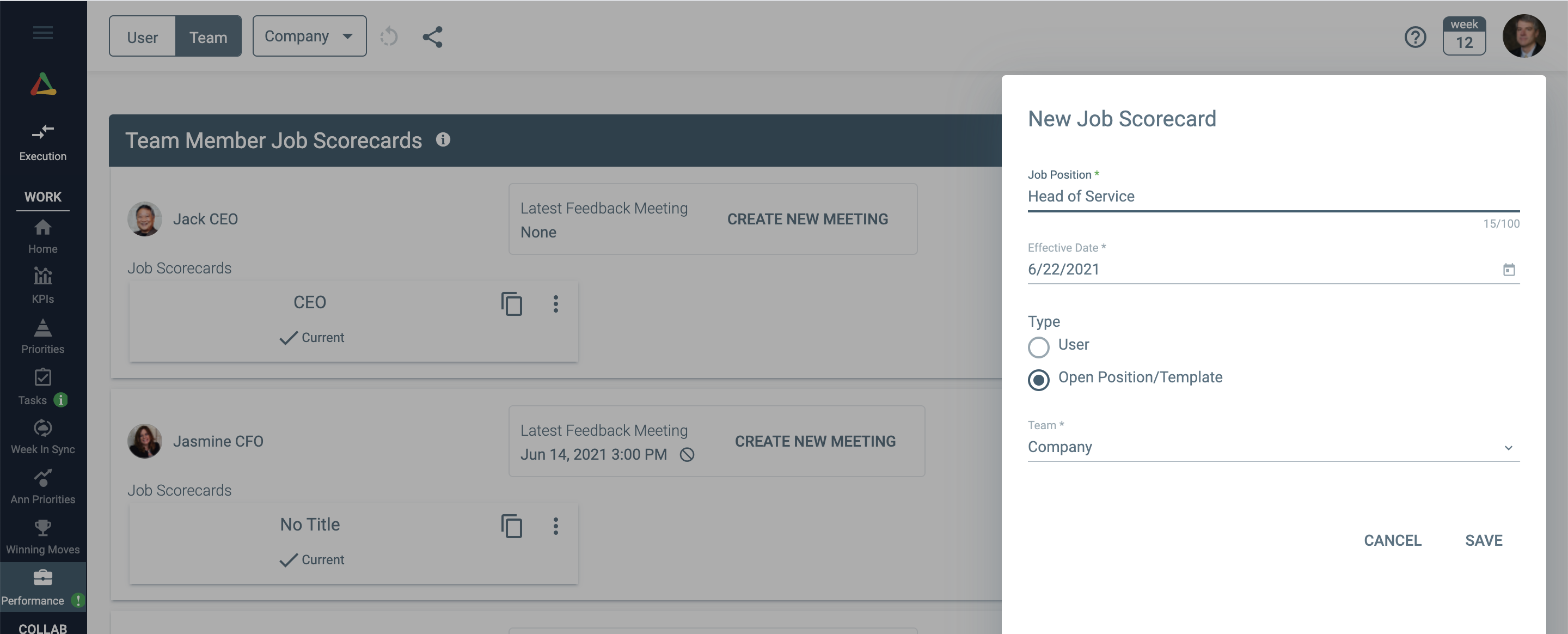Clarifying Roles with Job Scorecards
Job Scorecards clarify the purpose, desired results, key responsibilities, and skills & competencies for each role in your company.
Note: This content reflects our Enterprise software's default features and labels. For any questions, please email help@rhythmsystems.com.
Why Job Scorecards
Unclear roles and unclear goals create stress, lack of accountability, and poor performance in an organization. Each person deserves to know exactly what they are responsible for and how success will be measured. Completing Job Scorecards will help you clarify each role in your company.
With role clarity, you'll be empowered to assess your own performance, own your results, identify personal development needs, and significantly multiply your contributions to the company and to your own success.
How to Fill Out a Job Scorecard
Tip: You can click the More Actions button ![]() to make a copy of a Job Scorecard if you have several people on the team filling the same or similar roles.
to make a copy of a Job Scorecard if you have several people on the team filling the same or similar roles.
Below are descriptions and tips for completing each section of the Job Summary screen in Rhythm:
- Job Position: What is your current role? Start with clarifying what your position is called and when your role started (Effective date).
- Reports To: Who do you report to in your role? For example, do you report directly to the CEO, or the head of a department?
- Purpose: Why does this job exist? Begin with the end in mind by starting with the overall purpose of this role within the organization. Understanding the purpose of the role will inform the way you think about the rest of the questions, and taking the time to think about and articulate the purpose of your role in the company will provide meaning to the work that you do and how you contribute to your organization’s Core Purpose.
- Desired Results: What are you accountable for and how will success be measured? What is the visible and measurable evidence that the responsibilities are being met and the purpose is being fulfilled? You can link existing KPIs or Priorities or add new ones to this Dashboard for the key goals associated with your position.
- Key Responsibilities: What do I do? These are the specific processes and activities that are owned by this role and are necessary to fulfill its purpose and achieve the key results. This is not a long list of everything you do, but a statement of what you are responsible for accomplishing. One way to approach this is to make a list in a separate document of everything you currently do, then group the related items together in that list. This will help you organize and identify the key responsibilities of your role.
- Skills, Traits, & Competencies: What is required in order to be successful? These are the specific skills, traits, and competencies an individual must possess or develop in order to be successful in this role. It is important that you don’t just list things you are good at, but rather consider what you would need to look for in an individual that you would want to hire for this role. What is required to successfully fulfill the key responsibilities and achieve the desired results? No one knows better than you what is required to be successful in this role.
- Company Core Values: What behaviors should be demonstrated? These are the Core Values for your company; this section will be pre-filled with information from your company’s strategy screens. They are fundamental beliefs that your company holds up and requires of everyone in the organization. They should describe your culture and drive your behavior. This is not about what you do, but how you do it.
Note: You can click the + on the Performance screen to create a new Job Scorecard for an Open Position if you are in the process of hiring for a new role.

Tip: Want to have a space to take notes during performance conversations with your team members? Try downloading our Performance Conversation reports!
